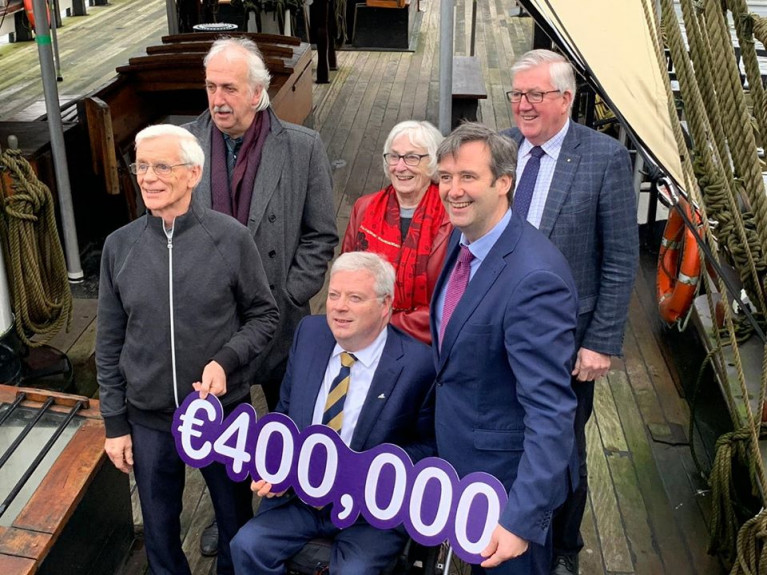Displaying items by tag: Dunbrody Famine Ship
Wexford's Tallship Dunbrody Ship-Shape With €400,000 Funding
Funding of around €400,000 from the Government has been allocated towards maintenance works on the Dunbrody Famine Ship over recent years.
The funding, according to the New Ross Standard, has been used to carry out essential works to the tallship (barque) vessel, including painting, waterproofing and the instalment of a lift.
Minister of State Michael D'Arcy Jnr said: 'The ship has a high level of maintenance work which has to be done. At a particular point we gave a commitment of €400,000 in funding.'
The barque went into dry dock at New Ross Boat Yard in January 2017 for several weeks and substantial repair and improvement works were carried out. She will once again go into dry dock in early 2021 for further works. Mr D'Arcy said the ship has been greatly improved over the past two years. A survey of the rigging will take place in early February, with specialists arriving from Cork at New Ross Boat Yard to carry out the job.
Mr D'Arcy was highly complimentary of the work of Dunbrody staff. 'This is one of the major tourism projects, not just in Wexford, but in Leinster and Ireland. My view on this is that the tourist projects like this need to cluster with other projects like Hook Lighthouse and the Irish National Heritage Park. There are very few projects in any other county that are as close to each other.'
The newspaper has more here on the story.
New Centre at Dunbrody Tells the Irish-American Story
Tomorrow sees the official opening ceremony of Ireland's first visitor centre dedicated to the history of emigration.
The National Centre for Emigration History in New Ross, Co Wexford, which incorporates the Irish America Hall of Fame, will be opened by Minister for Transport, Tourism and Sport Leo Varadar, joined by famous Irish-American Michael Flatley.
Located on the quay side of the River Barrow next to the popular tall ship Dunbrody, which commemorates the Great Famine, the €2.6 million interative centre features a state-of-the-art exhibition on the story of Irish emigration, plus a genealogical resource for visitors hoping to trace their Irish heritage.

























































